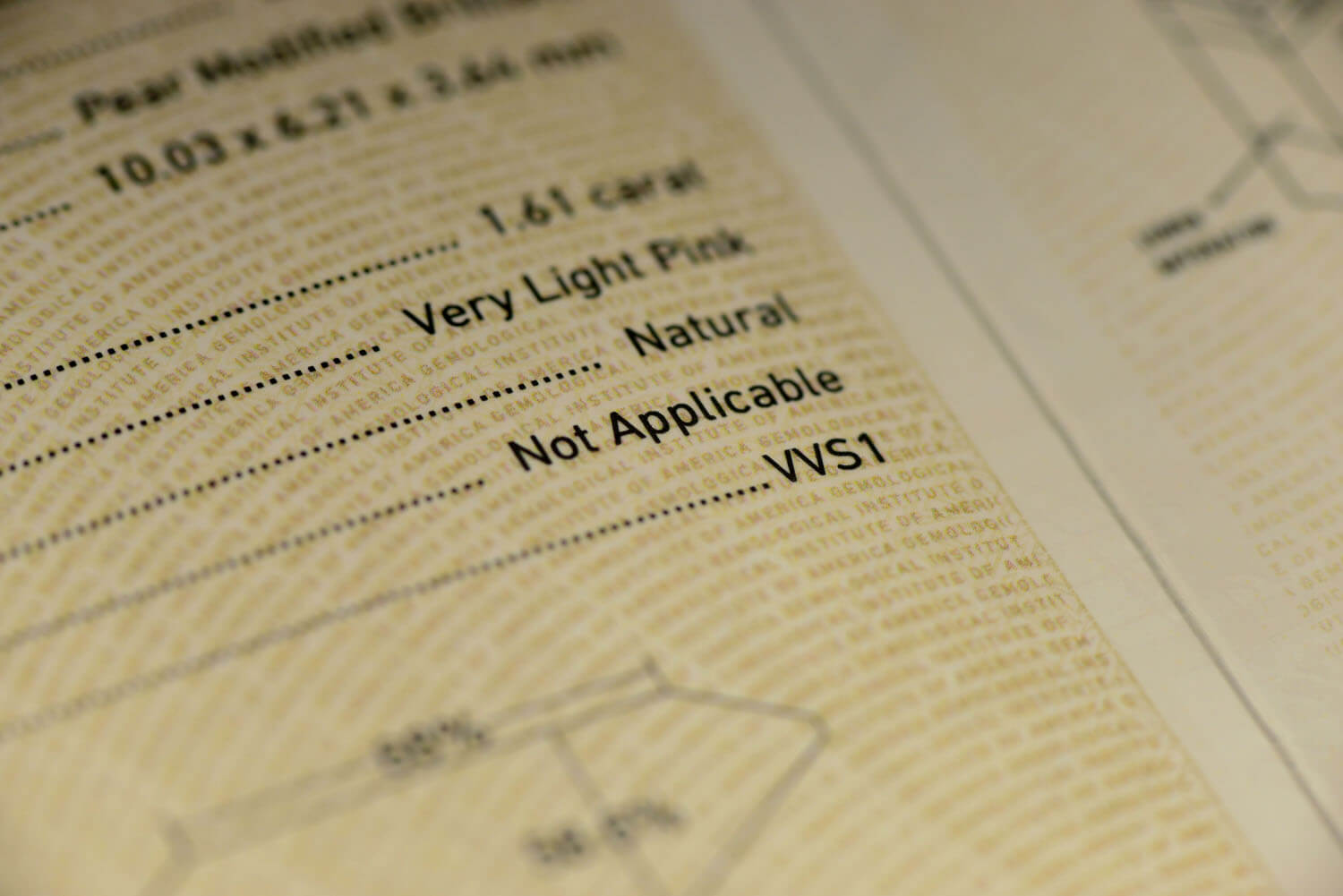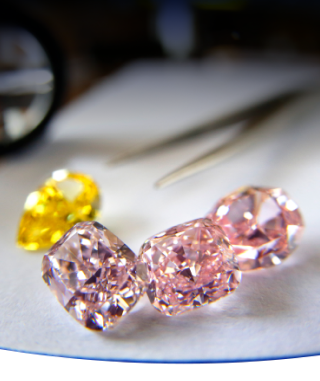After conducting a small survey among diamond wholesalers, we recognized an uncertainty in the trade regarding the term “Not Applicable”, which appears on GIA fancy color reports. Collectively, wholesalers felt that this term does not express a desirable attribute – but they could not clearly explain its implications.
We have found that for retailers, there was an obvious misunderstanding: many were unaware of the term’s true meaning and stated they refuse to sell a stone accompanied by a report with a “Not Applicable” description. Others thought there may be a connection to the term “Undetermined”, which questions the origin of color (“origin” refers to whether the stone is natural or color treated). In other words, they are unable to sell something they cannot explain to their customer.
“Not Applicable” Explanation
The face up view of a diamond is a “mosaic of color appearances.”[1.King J.M, Shigley J.E., Guhin S.S., Gelb T.H., Hall M. (2002). “Characterization and Grading of Natural-Color Pink Diamonds.” Gems & Gemology.] In paler colors, it is difficult to determine how well color is distributed throughout a stone, especially in smaller diamonds. In these circumstances, the GIA refrains from grading the color distribution as “Even” or “Uneven” and grants the stone with a “Not Applicable” grade. About 90% of all natural colored diamonds graded by the GIA fall into some kind of a “Fancy” grade description. The remaining stones are simply too pale and receive grades describing weaker saturations, such as Light, Very Light and Faint: these three grades will always receive the “Not Applicable” grade.
Try to visualize a faint pink round brilliant cut: It will be a challenge to pick out the exact location of color, as it can blend in with black reflections and the brilliance (white reflections) of the stone. According to the GIA doctrine, in these cases it is too difficult to determine whether the color distribution is “Even” or “Uneven”, which is why they created the “Not Applicable” grade.
Commercial Implications
In circumstances where retailers are under tight budget limitations and seeking pink, blue or green diamonds in the Light to Faint range, they miss a prime opportunity for a valuable purchase because they do not understand the “Not Applicable” grade and refuse to buy stones with this designation.
Conclusively, it is vital to understand that the term “Not Applicable” merely implies that the GIA does not want to grade color distribution for lighter colors. This term does not reflect the quality of a diamond’s color and as such, should not be a primary factor taken into consideration when retailers can clearly define the term for the end consumer.


